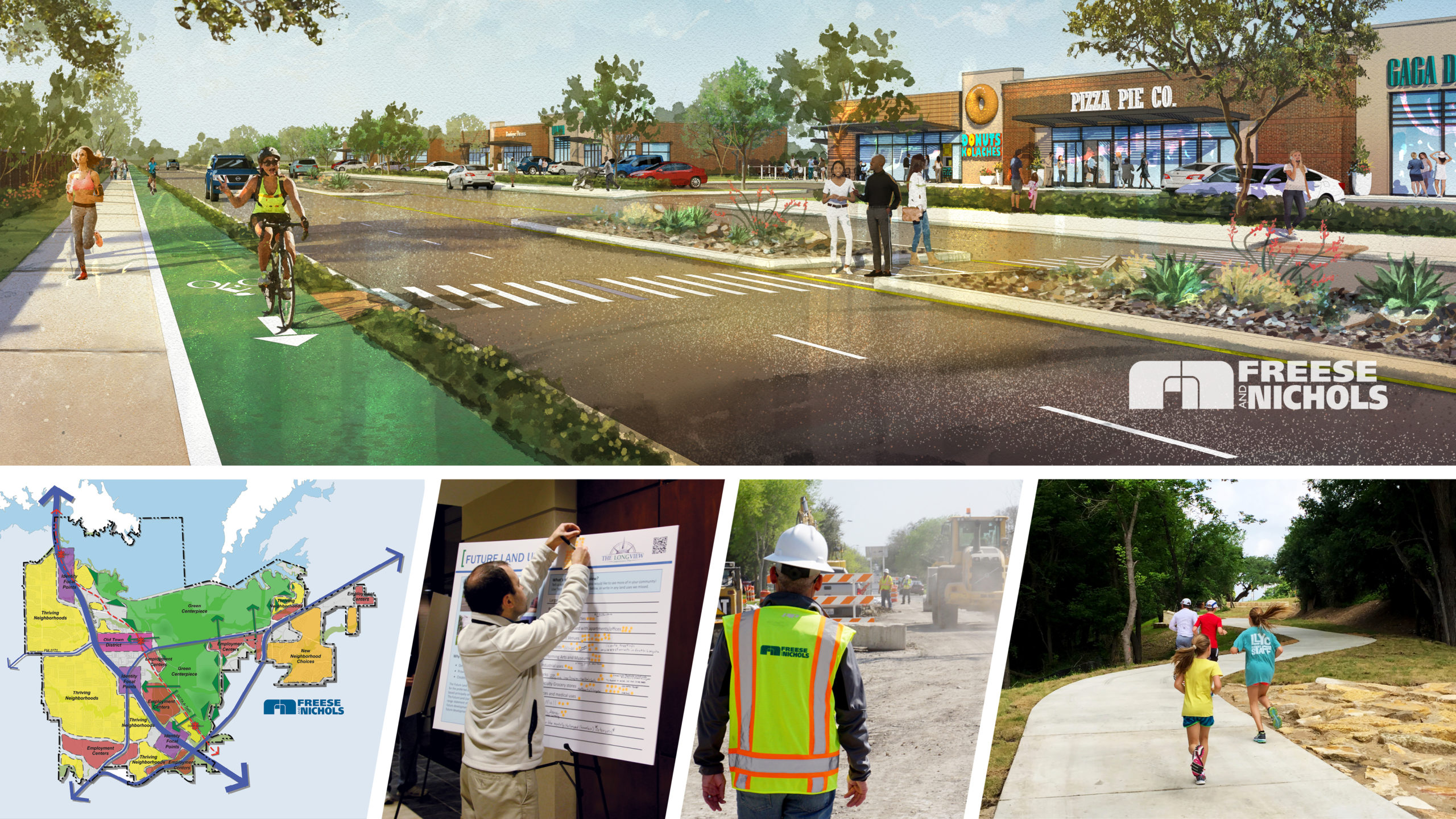What to Know as You Grow

Texas is the fastest-growing U.S. state, and that’s being fueled by cities of every size. But growth doesn’t have to take your city by surprise – or turn your community into something residents don’t want. City leaders can manage growth to help your community thrive by planning for it together with your constituents.
Here are seven tools for guiding growth:
ESTABLISH A VISION: Understand what makes your community unique and what you want it to be.
- Determine your long-term goals. It’s not a race to grow. Be strategic about the types of growth you allow that meet your long-term goals.
- Take the pulse of your community and root your plans in that feedback. Can your residents relate? Have they bought into proposed changes?
- Set achievable goals and objectives to guide decision-making. Have you examined the benefits and challenges associated with your choices?
- Invest in cultural and recreational assets, parks and historic preservation. What areas can you develop to set you apart and improve your residents’ lives? What would you miss if it disappeared?
UPDATE YOUR COMPREHENSIVE PLAN: Have a blueprint that keeps you prepared and nimble.
- Have a strong overall guide for future land use, housing and development of community assets.
- Include features addressing mobility, infrastructure assessment and annexation.
- Target your building where assets are already located to maximize existing investments.
- Update your plan every five years to stay flexible.
RELY ON MASTER PLANS: Use well-structured planning to embrace growth on your own terms.
- Develop master plans for key services and infrastructure, including water/wastewater/stormwater, parks and thoroughfares.
- Align all master plans with your comprehensive plan to provide consistency in decision-making.
- Prioritize short- and mid-range actions in your plans.
- Follow the plans to meet stakeholders’ expectations and maintain their support.
CAPITALIZE ON CAPITAL IMPROVEMENTS: Project and prioritize your 5-year CIP to keep pace.
- Identify, fund and implement capital investments.
- Coordinate among departments so they understand their role in the CIP – and the overall vision.
- Carefully plan the location and timing of projects, along with their funding mechanisms.
- Maintain consistency with the comprehensive plan and update the CIP regularly.
MANAGE DATA TO INFORM: Maximize the value of data for decision-making.
- Develop a plan for collecting and managing data.
- Integrate data sources to avoid gaps or conflicts.
- Leverage hydraulic and other models to get the fullest picture of your conditions and needs.
- Have an asset management mindset, and conduct scenario planning to anticipate fiscal impacts.
DEVELOP A WAY TO PAY: Explore all options; don’t give away too much through incentives.
- Allocate costs: impact fees, user fees, beneficiaries within special districts, such as TIFs, PIDs, MUDs and neighborhood empowerment zones.
- Explore state and federal grants and loans, including opportunities in new legislation.
- Balance how developer-friendly policies fit into your overall vision and impact current residents.
- Decide whether to invest in infrastructure to attract development or wait until it comes to you.
INSTILL ACTION IN YOUR CULTURE: Don’t just follow your vision, let it drive you forward.
- Set goals, keep them updated and adjust appropriately.
- Keep residents’ input at the core of your actions.
- Incorporate action into your day-to-day planning.
- Create accountability in decision-making.
How Freese and Nichols Can Help You
We’ve assisted cities across Texas with planning, infrastructure, funding and many other aspects of navigating growth. To learn more, contact Wendy Shabay Bonneau, wendy.bonneau@freese.com, 817-735-7259


